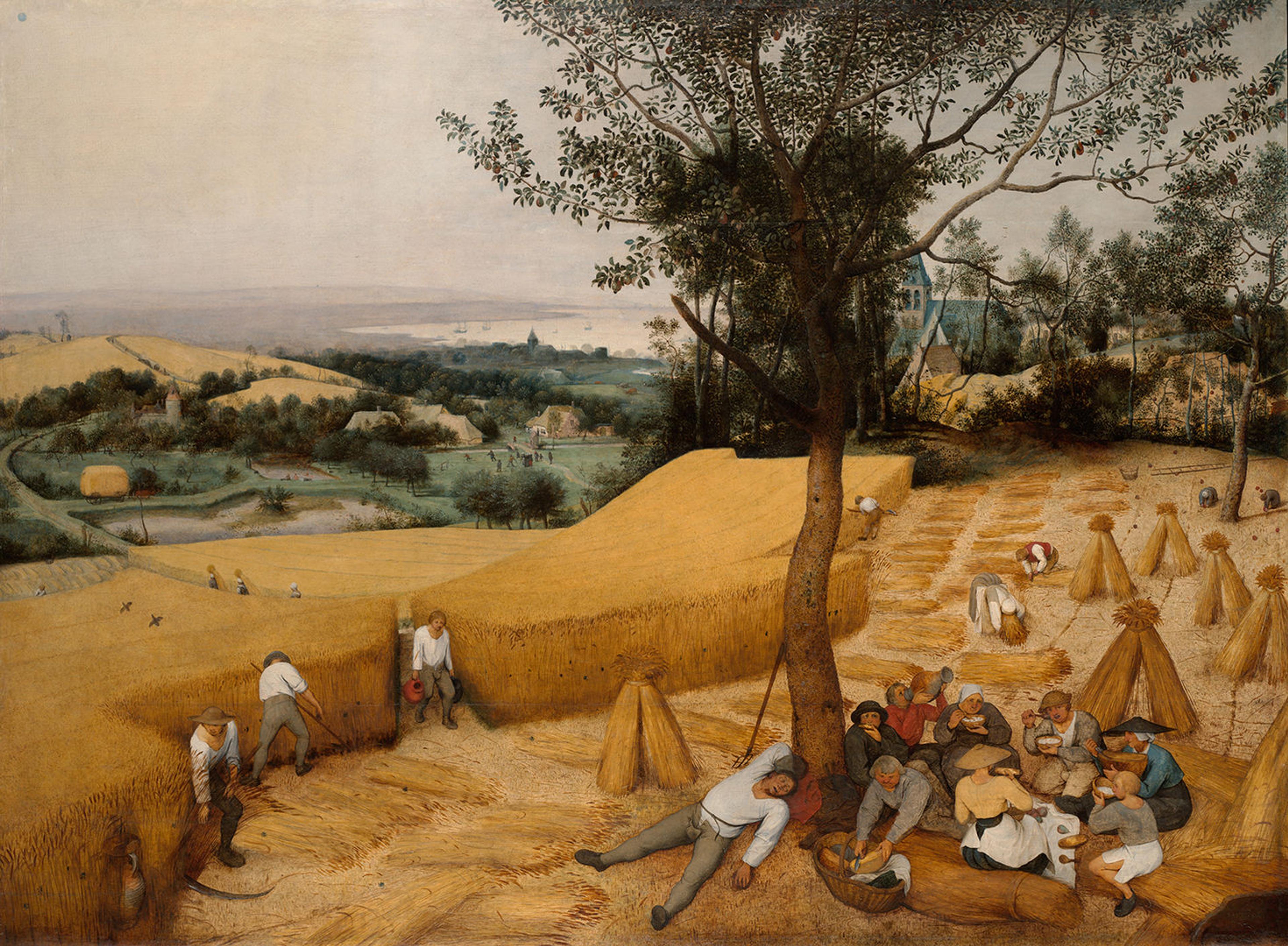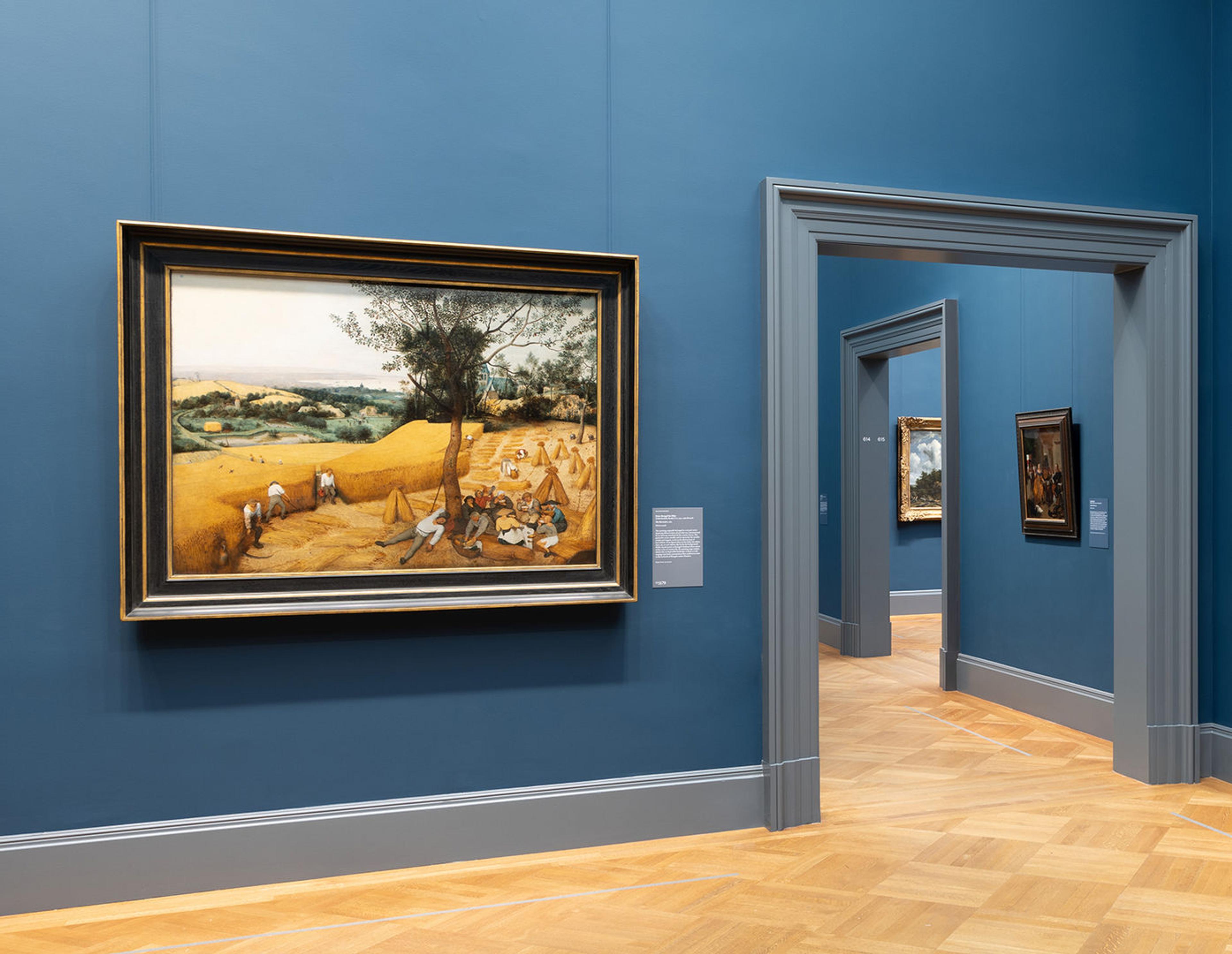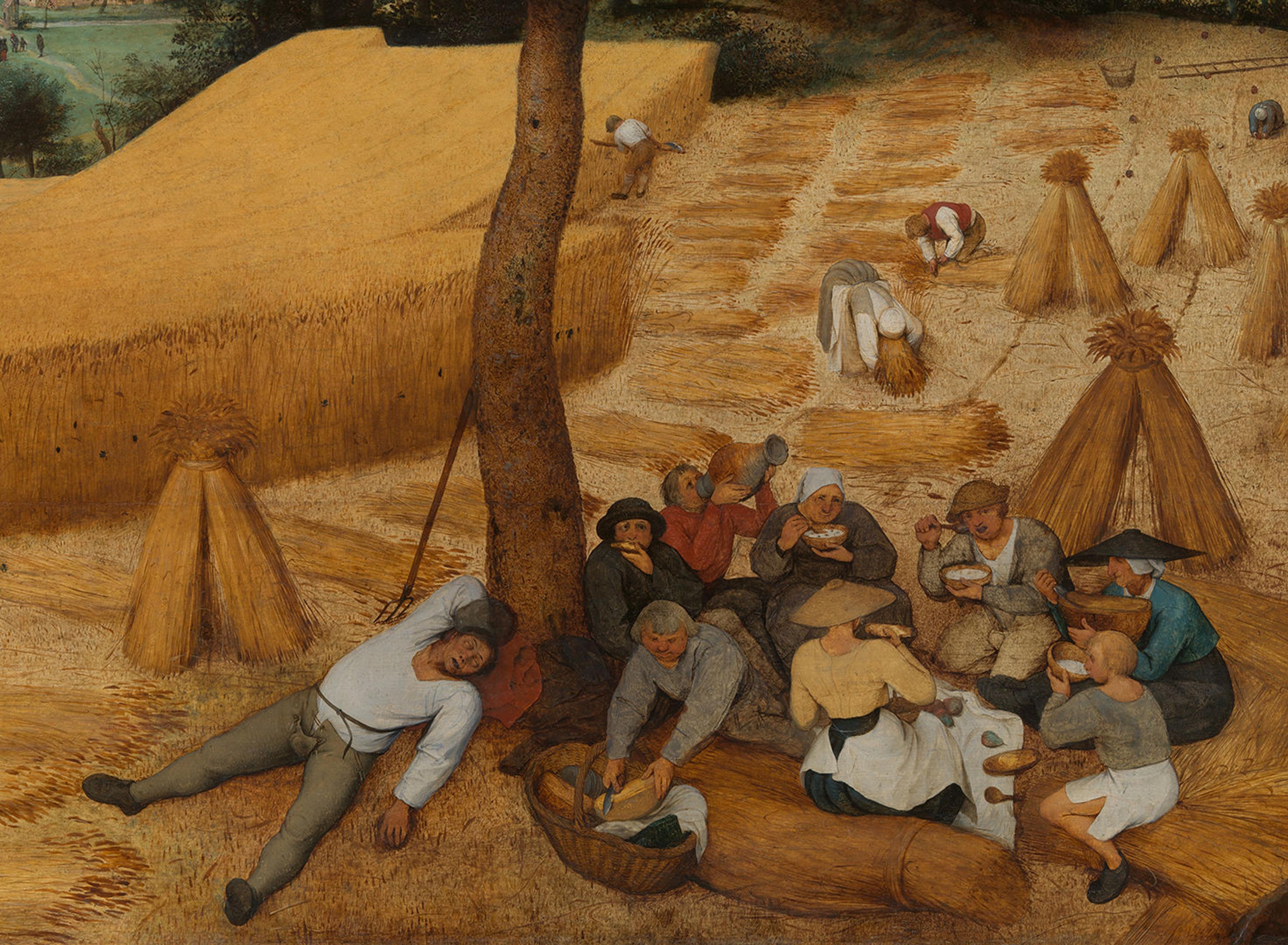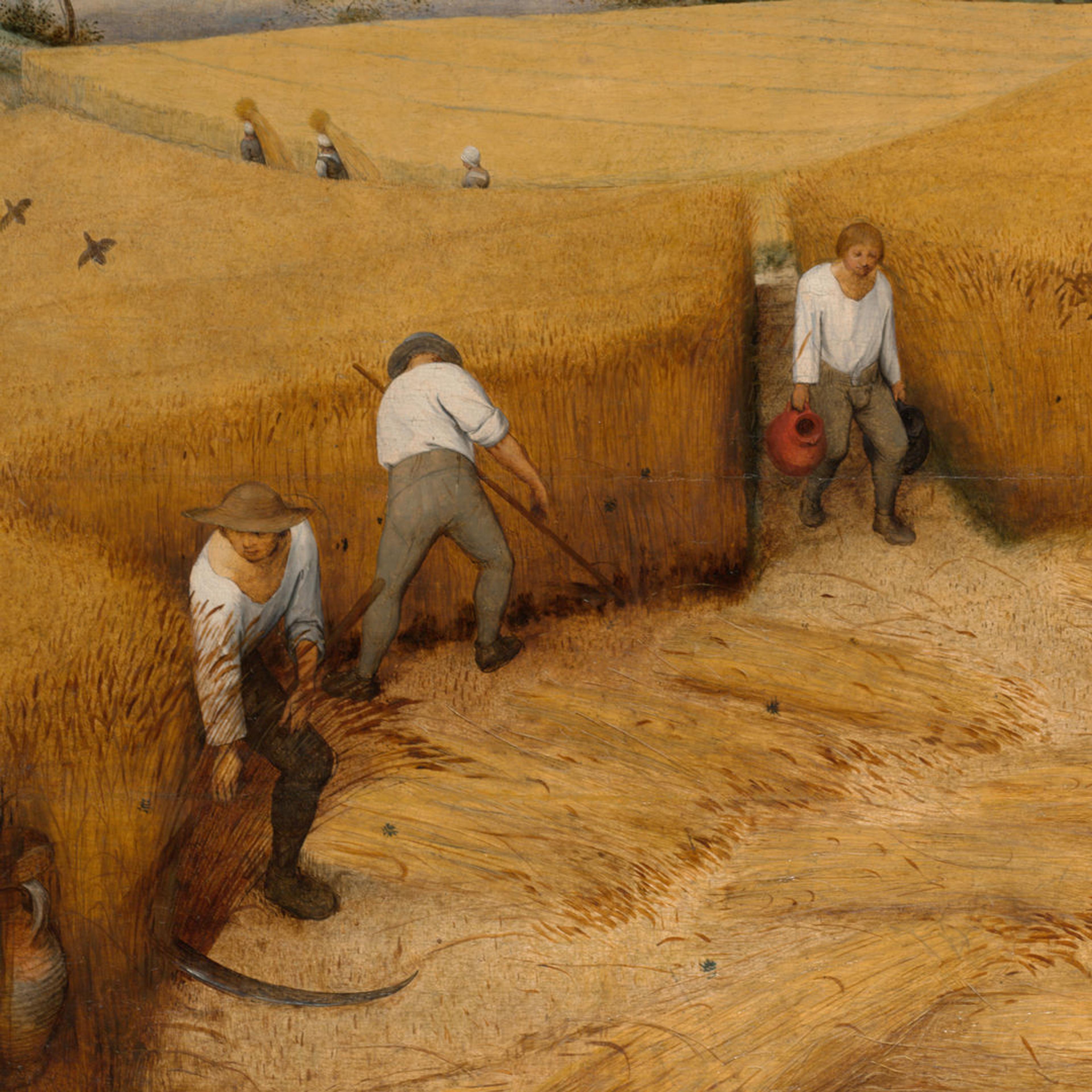I usually deflect when people ask me for my single, favorite work of art. I don’t know why, though, when I could just say The Harvesters (1565) by Pieter Bruegel the Elder and be done with it. During my ten years of working as a guard at The Met, no picture rewarded my attention as consistently.

Pieter Bruegel the Elder (Netherlandish, ca. 1525–1569). The Harvesters, 1565. Oil on wood, 46 7/8 x 63 3/4 in. (119 x 162 cm). The Metropolitan Museum of Art, New York, Rogers Fund, 1919 (19.164)
They say The Harvesters is one of the first true landscape paintings in the history of Western art. That is, it isn’t a landscape serving as a background for a religious scene in the foreground; the background is the foreground. It’s a painting of the world, and that’s all. The world—rolling, stretching, gorgeous, gleaming—can be a hard thing to pay attention to, and in Bruegel’s day, was a novel subject for art.
Ernest Hemingway visited The Met in 1950 and was displeased to find The Harvesters gallery closed. “I sure miss the good Bruegel,” he told the journalist Lilian Ross. “It’s the great one, of the harvesters. It’s a lot of people cutting grain, but he uses the grain geometrically, to make an emotion that is so strong for me that I can hardly take it.”[1] I love Hemingway’s description because it is wholly inarticulate and yet I know exactly what the tongue-tied writer means. A painting isn’t like words, it’s like paint itself: silent, direct, and concrete. Resisting translation into thought.
In the years when I worked as a security guard at The Met, the picture would look like a great window as I stood near it on my post.
It takes more than a moment to adjust to the world of a Bruegel painting. Minutes are good; hours are better. A guard is lucky to have long, quiet hours that stretch over days, weeks, months. In the years when I worked as a security guard at The Met, the picture would look like a great window as I stood near it on my post. I could gaze at its distant horizon or get lost in its atmosphere. “This isn’t like the little apartment I woke up in,” I’d tell myself. “Or the train car I rode in on, or the electrically lit gallery where I now stand. This is a hazy-hot, gold-green day in sixteenth-century Low Countries. And I can almost breathe it into my lungs.”

View of Pieter Bruegel the Elder’s The Harvesters (19.164) in Gallery 613, November 2023
It’s the sort of picture you’ll want to inspect up close. As you do, follow the long swoop down toward the distant harbor. Find tall ships ready to carry the harvest to foreign ports. Locate a swimming hole where robeless monks skinny dip. Find a rooster murdered by scruple-less boys in a cruel historical game known as cock throwing. Observe the women bundling and carrying, the men mowing the fields, a water jug tucked into the scant shade to cool. And finally, park your eye among the nine peasants resting beneath a pear tree. What to say about my beloved peasants? Bruegel has painted them comically, but they’re also sympathetic, and so human—see the fellow having the world’s most restful nap. He is conked out next to friends, family, and neighbors, the people with whom he breaks bread. It’s the world, and that’s all.

Pieter Bruegel the Elder (Netherlandish, ca. 1525–1569). The Harvesters (detail), 1565. Oil on wood, 46 7/8 x 63 3/4 in. (119 x 162 cm). The Metropolitan Museum of Art, New York, Rogers Fund, 1919 (19.164)
I am sometimes asked if I miss being a guard at The Met. Of course I do. When I visit The Harvesters now, I am a normal visitor, spending a minute or two in its gold-green haze before moving on. When I do, though, I run into people I still break bread with; they’re in blue suits and standing in galleries’ corners. And I exit onto Fifth Avenue and try to notice the gleaming world beyond.
Notes
[1] Lillian Ross, “How Do You Like it Now, Gentlemen? The Moods of Ernest Hemingway,” The New Yorker, May 6, 1950, https://www.newyorker.com/magazine/1950/05/13/how-do-you-like-it-now-gentlemen.
